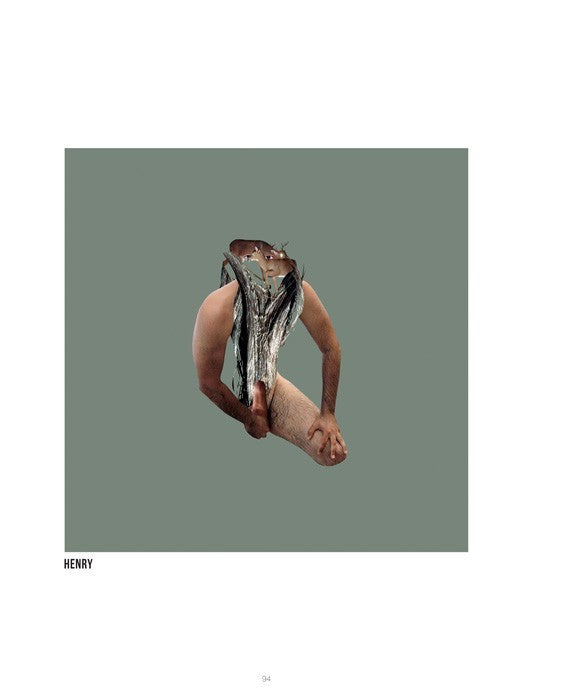Books
Magazines
Artwork
Editions
Multimedia
Allied Publishers
Authors
Style
Perla Medley
Posters & Postcards
Antiquarian












english or german
IN SCHUDA’S WORLD
the spiritual in Susanne Schuda’s The Cell
Susanne Schuda’s art features the self-assertion of the individual within society and with a constructed reality. By means of exaggeration, pointed emphasis, reconstruction of familiar elements and the deformation of the habitual, the mechanisms the individual is exposed to become perceptible. In the beginning, constraints and fears of the human being as well as wishes and hopes associated with them were influenced by religions, ideologies and philosophies of life. Meanwhile, these “grand narrations” have been reduced to absurdity and replaced by the reality construction of the media. In the consumer craze that goes hand in hand with this development, body and psyche of the human being are successfully merchandised. Pseudo- religious concepts of a better life as well as manifold power and violence structures determine the new contexts. I Every religion regulates to protect the body and prohibits physical abuse. This may also be misunderstood as a basis for a long and happy life. The promised paradise turns out to be unattainable, so we have to realise it here on Earth. The struggle for eternal youth and a successful life is evident in the accumulation of material values and the intensive occupation with appearances. Religious or esoteric elements constitute a spiritual, ideological background for the treatment of our body. Through our own existence, we become creators and try to outdo God whom we have created ourselves.
Susanne Schuda’s art is located in this field of tension. However, her position is neither admonitory nor oriented towards something primal. In fact, she creates a functioning parallel world consisting of familiar set pieces with an uncanny and repulsive effect. The familiar has transformed itself to something monstrous. In her work The Cell, Susanne Schuda presents a multimedia installation that transfers the exhibition space into a sacred situation. The cell as the indispensable building block of life is at the centre of this worship. Only one hundredth of a millimetre across, only recognisable under the microscope, the cell ensures that an organism is at all viable. Only specialists can explore how it works. A stunned lay person is helpless in face of its transformations.
The artist gives this enigma a spiritual background and employs a fictional narrative structure, in which the protagonists My Mother, Whoreson and The King reflect on the issue in dialogic form. They recite their stereotypical clichés like a mantra. These figures have lost their actual identity.
They represent positions which either become effective in one person at the same time or prevail in one case or another. All of them are somehow connected with the pro liferation of cells which is considered to be supreme. It is possible to accept this proliferation as a given fact – there is no reason to oppose it, it is rather regarded as a new chance. In any case, there is a reference to an abandonment to God. The King matches this way of thinking most closely. He has advanced into higher spheres. There he devotes himself to collective proliferation. My Mother still seems to believe in Botox, Pilates and Size Zero. She seals herself off and is concerned with the sanctuary of her body. She rebels against dissolution, even though she too has already lost. Whoreson, who is at odds with his life, is aware of the inevitability of the development – eventually of the proliferation – and tries to bear witness. As photographer he documents the processes that go hand in hand with the transformation. His bearing witness is a religious act, just like the battle My Mother is willing to fight. The King has decided to abandon himself as much as possible and will thus – at least in his own view – become the Enlightened One, the Messiah.
It is clearly recognisable how the protagonists move as mirror-images of western capitalist behaviour. The religious element is marked by a certainty that is, however, no longer there and seems to be blurred. The aim is an obsessive holding on to the senseless which is paradoxically mistaken as the basics.
In our life, the media have made an image of the body – for a better life. Schuda’s figures try to follow up on this “promise of salvation“ and end up in increasingly absurd invocations. They have stopped trying to conciliate the cell – My Mother not entirely. With her protagonists, Susanne Schuda has already gone a step further and draws conclusions from the real, present development. Thus she deliberately makes use of the history of the body’s image – not only with regard to art, but with regard to the general view of the human body as such.
So the art of Modernism presents us with the deformed, manipulated and destroyed body. The beau ideal following antiquity was suddenly considered to be obsolete. This ideal was taken up and perverted In totalitarian systems such as Fascism, which glorified strong, athletic and healthy bodies. In contrast, Modernism has replaced it by a deconstructivist, analytical concept. Influenced by the capitalist media society, we have again distanced ourselves from Modernism and are pursuing grotesque physical ideals, which Susanne Schuda meets with mockery and a striking formal quality.
Günther Holler-Schuster, 2009
Page 6*Page 7*Page 13*Page 30 and 31*Page 40*Page 42*Page 50*Page 57*Page 61*Page 92*Page 94